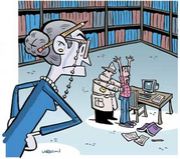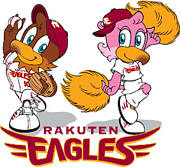August 10, 2001
Hunks of a Bygone Era Bolstered Beleaguered Masculinity
By MICHIKO KAKUTANI
HOUDINI, TARZAN AND THE PERFECT MAN
The White Male Body and the Challenge of Modernity in America
By John F. Kasson
256 pages. Hill & Wang. $26.
The new male vanity, recently identified by New York magazine, appears to have had a turn-of-the-century precedent. While many upwardly mobile men today seem to be developing ''Adonis complexes'' -- satiated with gym memberships as well as plastic surgery and cosmetic buying sprees -- men in the late 1800's and early 1900's displayed a similar fascination with their bodies and the idea of physical metamorphosis.
It was a phenomenon embodied, the historian John F. Kasson writes in his slight but intriguing new book, in the oft-repeated story of how President Theodore Roosevelt overcame childhood adversity, transforming ''his 'sickly, delicate,' asthmatic body into the 200-pound muscular, barrel-chested figure of a supremely strong and energetic leader.''
In ''Houdini, Tarzan and the Perfect Man,'' Mr. Kasson moves beyond ''Roosevelt's performances of manliness,'' to look at three popular figures of the day who he says represented evolving notions of masculinity: Eugen Sandow, a vaudeville performer and the father of modern bodybuilding, who was billed as the ''strongest man in the world''; Harry Houdini, the magician and escape artist known for his daring performances that ''emphasized his masculine toughness, fearlessness and invincibility''; and the fictional character Tarzan, the high-born noble savage, who incarnated ''enduring cultural fantasies about manly freedom and wildness.''
It is Mr. Kasson's argument that these three representative figures -- whose naked physiques were imprinted on the public imagination through the popular new medium of photography -- became iconic figures of masculine strength at a time when white males perceived themselves to be under threat from changing social circumstances. For men born too late to take part in the Civil War or the settling of the frontier, there were fewer conventional tests of courage to be found.
At the same time increasingly independent women were challenging traditional gender roles, the country's growing urbanization was nourishing worries about declining physical vigor, and a new corporate culture was threatening the cherished ideals of autonomy and individuality.
In figures like Tarzan, Houdini and Sandow, Mr. Kasson suggests, American men saw the possibility of transcending their problems, of embracing their animal nature like Tarzan or remaking their puny bodies into muscle machines like Sandow and Houdini.
The problem with this book is that Mr. Kasson -- who teaches history and American studies at the University of North Carolina at Chapel Hill -- does not fully flesh out this argument in the remaining pages of his book but instead settles for giving the reader lively but shallow profiles of his three representative men.
Sandow, whose name became ''a synonym for muscular development'' began as an acrobatic strongman in British music halls. In 1893 he made his American debut, demonstrating his strength and dexterity on a New York stage. The finale of his act was called the ''human bridge'': he bent over backward, hands and feet on the ground, and a platform was placed on his chest. ''Then three trained horses (actually ponies), with an advertised combined weight of 2,600 pounds, stepped onto the platform and stayed there for about five seconds supported by Sandow, whose 'every muscle . . . stood out like whipcord.' ''
The ''first great male pinup in modern history,'' Sandow became so famous, Mr. Kasson reports, that nude portraits of him were ''displayed in fashionable ladies' sitting rooms.'' ''His physique was widely interpreted,'' he writes, ''not simply as an individual achievement but as a reaffirmation of male identity at a time when it seemed to be losing authority and coherence. By stressing the potential for strength, control, heroism and virility in the male physique, he reassured a broad public of the continuation of these qualities -- and their potential for further development -- in the modern world.''
Houdini's miraculous escapes from handcuffs, straitjackets and jail cells -- which were often performed in the near-nude -- also became emblematic of a heroic masculinity. The performance known as ''Metamorphosis'' -- in which Houdini began the act bound and tied inside a box, then magically exchanged places with his female assistant, who ended up bound and tied in the same box -- could be viewed as a man's miraculous release from confinement and the corresponding capture of a woman.
Other performances involving his escape from a variety of mechanical devices designed to thwart his powers -- a locked glass box, a gigantic sausage skin, an iron hot-water tank that had been riveted shut -- could be seen as gestures of defiance in the face of a mechanized society.
As for Tarzan, who was created as the Walter Mittyish fantasy of a frustrated businessman named Edgar Rice Burroughs, he, too, spoke to ''the urge to recover a primitive freedom and wildness.'' The ultimate self-made, self-taught man, Tarzan ratified the ''widespread sense that modern technological civilization created restrictions, frustrations, ordinariness that entailed special losses for men.''
Though Mr. Kasson raises the question of racism in the Tarzan stories -- the ''lord of the jungle'' is really the noble-born Lord Grey stoke, who expresses a ''visceral racial antipathy'' toward black Africans -- he does not seriously develop this line of inquiry. He takes a similarly perfunctory approach to the ''new 'crisis' of masculinity'' that he says developed in America in the wake of Vietnam and a resurgent women's movement in the 1970's. As a result this volume has a cursory feel to it: like an unfinished essay, blown up, through steroids, to book length.
http://
Hunks of a Bygone Era Bolstered Beleaguered Masculinity
By MICHIKO KAKUTANI
HOUDINI, TARZAN AND THE PERFECT MAN
The White Male Body and the Challenge of Modernity in America
By John F. Kasson
256 pages. Hill & Wang. $26.
The new male vanity, recently identified by New York magazine, appears to have had a turn-of-the-century precedent. While many upwardly mobile men today seem to be developing ''Adonis complexes'' -- satiated with gym memberships as well as plastic surgery and cosmetic buying sprees -- men in the late 1800's and early 1900's displayed a similar fascination with their bodies and the idea of physical metamorphosis.
It was a phenomenon embodied, the historian John F. Kasson writes in his slight but intriguing new book, in the oft-repeated story of how President Theodore Roosevelt overcame childhood adversity, transforming ''his 'sickly, delicate,' asthmatic body into the 200-pound muscular, barrel-chested figure of a supremely strong and energetic leader.''
In ''Houdini, Tarzan and the Perfect Man,'' Mr. Kasson moves beyond ''Roosevelt's performances of manliness,'' to look at three popular figures of the day who he says represented evolving notions of masculinity: Eugen Sandow, a vaudeville performer and the father of modern bodybuilding, who was billed as the ''strongest man in the world''; Harry Houdini, the magician and escape artist known for his daring performances that ''emphasized his masculine toughness, fearlessness and invincibility''; and the fictional character Tarzan, the high-born noble savage, who incarnated ''enduring cultural fantasies about manly freedom and wildness.''
It is Mr. Kasson's argument that these three representative figures -- whose naked physiques were imprinted on the public imagination through the popular new medium of photography -- became iconic figures of masculine strength at a time when white males perceived themselves to be under threat from changing social circumstances. For men born too late to take part in the Civil War or the settling of the frontier, there were fewer conventional tests of courage to be found.
At the same time increasingly independent women were challenging traditional gender roles, the country's growing urbanization was nourishing worries about declining physical vigor, and a new corporate culture was threatening the cherished ideals of autonomy and individuality.
In figures like Tarzan, Houdini and Sandow, Mr. Kasson suggests, American men saw the possibility of transcending their problems, of embracing their animal nature like Tarzan or remaking their puny bodies into muscle machines like Sandow and Houdini.
The problem with this book is that Mr. Kasson -- who teaches history and American studies at the University of North Carolina at Chapel Hill -- does not fully flesh out this argument in the remaining pages of his book but instead settles for giving the reader lively but shallow profiles of his three representative men.
Sandow, whose name became ''a synonym for muscular development'' began as an acrobatic strongman in British music halls. In 1893 he made his American debut, demonstrating his strength and dexterity on a New York stage. The finale of his act was called the ''human bridge'': he bent over backward, hands and feet on the ground, and a platform was placed on his chest. ''Then three trained horses (actually ponies), with an advertised combined weight of 2,600 pounds, stepped onto the platform and stayed there for about five seconds supported by Sandow, whose 'every muscle . . . stood out like whipcord.' ''
The ''first great male pinup in modern history,'' Sandow became so famous, Mr. Kasson reports, that nude portraits of him were ''displayed in fashionable ladies' sitting rooms.'' ''His physique was widely interpreted,'' he writes, ''not simply as an individual achievement but as a reaffirmation of male identity at a time when it seemed to be losing authority and coherence. By stressing the potential for strength, control, heroism and virility in the male physique, he reassured a broad public of the continuation of these qualities -- and their potential for further development -- in the modern world.''
Houdini's miraculous escapes from handcuffs, straitjackets and jail cells -- which were often performed in the near-nude -- also became emblematic of a heroic masculinity. The performance known as ''Metamorphosis'' -- in which Houdini began the act bound and tied inside a box, then magically exchanged places with his female assistant, who ended up bound and tied in the same box -- could be viewed as a man's miraculous release from confinement and the corresponding capture of a woman.
Other performances involving his escape from a variety of mechanical devices designed to thwart his powers -- a locked glass box, a gigantic sausage skin, an iron hot-water tank that had been riveted shut -- could be seen as gestures of defiance in the face of a mechanized society.
As for Tarzan, who was created as the Walter Mittyish fantasy of a frustrated businessman named Edgar Rice Burroughs, he, too, spoke to ''the urge to recover a primitive freedom and wildness.'' The ultimate self-made, self-taught man, Tarzan ratified the ''widespread sense that modern technological civilization created restrictions, frustrations, ordinariness that entailed special losses for men.''
Though Mr. Kasson raises the question of racism in the Tarzan stories -- the ''lord of the jungle'' is really the noble-born Lord Grey stoke, who expresses a ''visceral racial antipathy'' toward black Africans -- he does not seriously develop this line of inquiry. He takes a similarly perfunctory approach to the ''new 'crisis' of masculinity'' that he says developed in America in the wake of Vietnam and a resurgent women's movement in the 1970's. As a result this volume has a cursory feel to it: like an unfinished essay, blown up, through steroids, to book length.
http://
|
|
|
|
コメント(1)
本書によると現代の多くの男性はアドニス・コンプレックスを持っているそうなのです。しかし18世紀終盤と19世紀の初めにも、自分の身体を鍛えたり、しばいたりして美しく改造することが流行ったそうで、著者は奇術師のHarry Houdini、近代ボディ・ビルディングの父、Eugen Sandow、そしてお馴染みのTarzanを例に挙げてマスキュリニティの概念の進化を論じているそうです。
当時、Civil-Warに遅れてきた世代の男性たちは‘男らしさ’を証明するための機会が少なくなってきたことに焦りを感じ、また自立しつつあった女性たちは伝統的な性差による役割に挑戦し、都市化が強靭な肉体をもはや必要としなくなりつつあり、さらにcorporate cultureによって自治や個人の理想を脅かしていたという背景が‘男らしい肉体’への憧憬として現出したと…。
そして筆者(アメリカの歴史の先生)は、当時のアメリカの男性は、3人のように自分の肉体を強く美しく改造し、内面の問題を乗り越えようとしたと主張しているそうです。が…、
致命的にもdoes not fully flesh out this argument in the remaining pages of his bookと、彼の主張の根拠が乏しいと…よって、単に3人の男たちの浅いプロフィールを書いているだけの本になっているとの批判です。
そして、As a result this volume has a cursory feel to it: like an unfinished essay, blown up, through steroids, to book length.
ステロイドによって、‘本’の長さにまで引き伸ばされた、冗長なエッセイのようであるとしています。
blown up, through steroids, to book length.
これキマッテますね。 かなり厳しい一言ですが。
‘肉体を強く美しく改造し、内面の問題を乗り越えようとした’
でもこの主張は、詳しく分析してもらわなくても、分からないでもないですよね。。。そういうユルさは許されないのでしょうか。
当時、Civil-Warに遅れてきた世代の男性たちは‘男らしさ’を証明するための機会が少なくなってきたことに焦りを感じ、また自立しつつあった女性たちは伝統的な性差による役割に挑戦し、都市化が強靭な肉体をもはや必要としなくなりつつあり、さらにcorporate cultureによって自治や個人の理想を脅かしていたという背景が‘男らしい肉体’への憧憬として現出したと…。
そして筆者(アメリカの歴史の先生)は、当時のアメリカの男性は、3人のように自分の肉体を強く美しく改造し、内面の問題を乗り越えようとしたと主張しているそうです。が…、
致命的にもdoes not fully flesh out this argument in the remaining pages of his bookと、彼の主張の根拠が乏しいと…よって、単に3人の男たちの浅いプロフィールを書いているだけの本になっているとの批判です。
そして、As a result this volume has a cursory feel to it: like an unfinished essay, blown up, through steroids, to book length.
ステロイドによって、‘本’の長さにまで引き伸ばされた、冗長なエッセイのようであるとしています。
blown up, through steroids, to book length.
これキマッテますね。 かなり厳しい一言ですが。
‘肉体を強く美しく改造し、内面の問題を乗り越えようとした’
でもこの主張は、詳しく分析してもらわなくても、分からないでもないですよね。。。そういうユルさは許されないのでしょうか。
- mixiユーザー
- ログインしてコメントしよう!
|
|
|
|
Michiko Kakutani 更新情報
-
最新のイベント
-
まだ何もありません
-
-
最新のアンケート
-
まだ何もありません
-
























